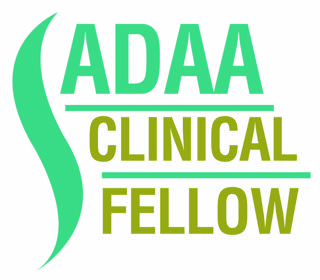Why You Should Avoid Avoidance if You Have Anxiety
If you struggle to cope with anxiety, I guarantee you have developed patterns of avoidance to minimize feelings of distress. The current prevalence of trigger warnings accompanying TV shows, live performances, and social media posts may make avoidance appear to be an appropriate strategy. But protecting yourself from potential triggering content or situations will only heighten your anxiety, make it harder to tolerate in the long run, and seriously affect your enjoyment of life.
I am not suggesting a head-first plunge from the high board into the deep end of the anxiety pool as a means of overcoming trauma or unpleasant feelings. You can start at the shallow end, dip a toe in, and then ease in slowly, if the gradual approach suits you better. Ultimately, though, you have to get wet.
Minimizing avoidance is the rationale behind Exposure and Response-Prevention treatment, the primary evidence-based behavioral treatment for OCD and other anxiety-driven syndromes. There is even a protocol called Prolonged Exposure used to treat PTSD symptoms stemming from serious traumatic events such as combat. Any type of exposure treatment involves seeking out triggers and learning to tolerate the discomfort they provoke (or, in the case of Prolonged Exposure for PTSD, reliving the trauma over and over by visualizing it repeatedly).
For debilitating anxiety or trauma, you should undertake exposure exercises only with the support and guidance of a qualified professional. But if you see yourself opting out of situations that simply make you uncomfortable, such as social events, driving, or even shopping at a different grocery store, you can find opportunities to push yourself toward the discomfort every day.
Whenever I catch myself finding excuses not to engage in an activity that makes me nervous, I try to practice what I preach and do it anyway.
In the fall I organized a group of neighbors to play Pickleball. We were all beginners, equally clumsy and clueless, and it was fun. But then an injury sidelined me. I didn’t play again for four months, until a few weeks ago, when I was invited to join a group of regular players. Most of them play daily. They are at a level far above mine, and they are very competitive.
Despite considerable trepidation, I forced myself to go. I was embarrassed by my lack of skill and felt myself transported back to middle school, when I was the last to be picked for the team in whatever sport we were playing. I am not exaggerating when I say I felt close to tears.
I really wanted to make an excuse never to return. Which is exactly why I forced myself to go back the next week, and then again a few days later.
I am still the weakest link but my skills have improved. More important, I am proud I didn’t let my feelings of awkwardness and discomfort get the better of me. I may or may not keep playing with the group, but if I choose to stop or look for other, less intense Pickleball partners, I can be confident I am not letting anxiety drive my decision.
So get out there. Force yourself to do whatever your anxious brain is telling you to avoid. Don’t let it boss you around. You will be glad you pushed back and stopped letting anxiety control you.
Tags: anxiety, behavior change, OCD
Posted in General |
Making Peace with Anxiety
Anxiety is highly unpleasant. It causes physical discomfort—shortness of breath, muscle tightness, dizziness, queasiness—and mental anguish. In all my years of clinical practice, seeing thousands of people with anxiety, I have never encountered anyone who has not desperately wanted to get rid of it.
Earlier in my career, I was a dedicated advocate of techniques aimed to reduce, if not entirely eliminate, anxiety. I taught progressive muscle relaxation for tension- and pain-reduction, deep breathing to manage panic attacks, and thought-challenging to address catastrophic thinking. But in recent years, these approaches are no longer regular staples of my clinical repertoire. Like many of my cognitive-behavioral colleagues, I have changed the focus of treatment from reducing anxiety to learning to accept and manage emotions, even negative ones like anxiety, while embracing uncertainty with the aim of living a richer life.
Practicing acceptance requires a major shift in attitude. For most people with anxiety, avoidance is the most common coping strategy. But avoiding anxiety-provoking situations and triggers comes with a steep cost: a flat, joyless existence.
Think about anxiety as a wave in the ocean. If you try to outrun it, you may end up crashing into the shore with skinned knees and a mouthful of sand. But if you dive into the middle of the wave, it will wash over you and lose its momentum as it reaches the beach.
Why is it worth it for you to dive into the wave? If you can answer this question − hint: consider what values are important to you − you will finally be able to stop avoiding discomfort and start living a more fulfilling life, anxiety and all.
Tags: acceptance, anxiety management, mindfulness
Posted in Acceptance and Mindfulness, Anxiety |
If You Have OCD, Don’t Try This!
With summer travel in full swing, you may be tempted to look for “hacks” to make your packing and departure easier. Many are perfectly innocuous and even helpful. Rolling your clothes to maximize suitcase space or stuffing your shoes with your socks and underwear? Good ideas!
But if you have OCD and get stuck checking appliances, light switches, and door locks prior to leaving on a trip (or even for just the day), I would strongly advise you not to listen to the Lifehacker tip to take photos of your stove, thermostat, and appliances prior to travelling to ease your anxiety about having left something turned on.
It may be tempting to sidestep the checking process by snapping pictures to reassure yourself that you won’t have started a fire or caused a burglary. For a short time, your anxiety may lessen. But if you have OCD, the relief you feel will undoubtedly be short-lived.
Compulsions such as checking do serve to relieve anxiety in the short run. But they tend to escalate and demand more and more time because the doubt returns. The intolerance of uncertainty is a core feature of the thinking patterns fueling compulsive checking and other OCD behaviors.
Rather than checking over and over (or taking pictures) to feel certain, you need to train your mind to accept the lingering feeling of doubt by practicing—preferably before you go away for an extended period of time—setting a limit on the number of times you allow yourself to check and leaving even if you feel the urge to go back for another once over. The key is deciding ahead of time, rather than letting anxiety guide your actions. If you typically check appliances or the door ten times, say, start by cutting back by ten percent. When that becomes easier, reduce the number of checks again, and so on, until you are down to one or two.
When leaving for vacation, you can allow yourself an extra check (but only if you decide on the number in advance). Taking a picture might seem tempting, but it won’t lessen your discomfort if you have OCD. I’ve had patients tell me they’ve tried the picture hack only to question whether they might have turned the stove back on or plugged the iron in again after taking the photo.
So come up with a plan in advance, practice over and over before your trip, and save the photos for the sights you want to capture on your travels.
Tags: OCD
Posted in Anxiety, Obsessive Compulsive Disorder |


